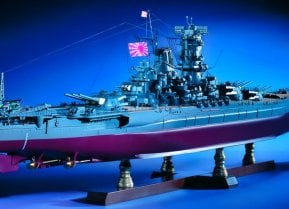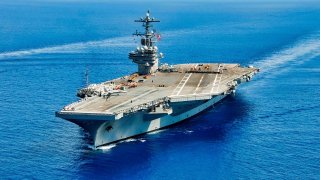Nimitz-Class: The U.S. Navy Aircraft Carriers That Can't Be Retired
The Nimitz-class aircraft carriers, serving since the 1970s, are set to remain active in the U.S. Navy longer than initially planned, due to delays in the deployment of their Ford-class successors.
Summary: The Nimitz-class aircraft carriers, serving since the 1970s, are set to remain active in the U.S. Navy longer than initially planned, due to delays in the deployment of their Ford-class successors. The Navy's 2023 budget includes $200 million for extension work, highlighting the carriers' crucial role in projecting military power globally, especially amid rising tensions in strategic locations. Originally intended to replace older classes with advanced nuclear power and enhanced armament, the ten Nimitz carriers have been pivotal in numerous military operations. Despite their extended service, technological advancements necessitate their eventual replacement by the more modern Ford-class carriers.
Nimitz-Class Carriers: Extending Service in the Face of Ford-Class Delays
The Nimitz-class aircraft carriers have remained the backbone of the U.S. Navy since their introduction in the mid-1970’s. Named to honor World War II Pacific Fleet commander Admiral Chester W. Nimitz, these nuclear-powered carriers represented the largest warships to ever be built for the service until the introduction of the USS Gerald R. Ford in 2017.
From the Cold War to the War on Terror, the Nimitz class has a proven track record of power projection. More recently, the service has revealed that this carrier class will remain commissioned for longer than initially planned. The Navy’s fiscal 2023 budget called to prolong the service life of the lead ship of the class beyond 2025.
The Nimitz-class’ planned Ford successors are experiencing delays and other production issues, forcing the Navy to maintain these carriers past their service lives.
According to a 2023 report to Congress, the Navy plans to spend $200 million on extension work to preserve the Nimitz ships’ life spans.
As stated by Director of Air Warfare Division N98 Rear Adm. Michael Donnelly, “Carriers are the linchpin of everything we do in naval aviation. Our requirements are designed and aligned within our air wings to provide the capability out to the [combatant commands] for our ability to conduct the mission. Our ability to get the carriers out on time, whether it is new procurement or maintenance, is essential.”
The Navy must keep a sufficient number of carriers out at sea to project military might abroad. As tensions in the Red Sea, Persian Gulf and South China Sea continue to spike, the presence of U.S. carriers is even more vital. Until the Ford ships all enter service, their Nimitz predecessors will remain deployable.
The history of the Nimitz-class
The Navy first ordered the Nimitz-class carriers as replacement vessels for the older Kitty Hawk and Enterprise-classes. Powered by two A4W pressurized water reactors instead of the typical gas turbines or diesel-electric systems used previously on ships, the Nimitz are more sophisticated than their predecessors. Specifically, this class can carry 90% more aviation fuel and to% more ordnance than the earlier Forrestal carriers. The U.S. Navy prioritized developing a carrier class capable of withstanding more than three times the damage inflicted on the Essex ships during the Second World War. To fulfill this need, the Nimitz hangers are divided and more protected to restrict the spread of fire.
Armament-wise, the Nimitz carriers are well-equipped. Each ship in this class carries two or three RIM-7 Sea Sparrow or RIM-162 Evolved SeaSparrow Missile Mk29 missile launchers for use against aircraft and anti-ship missiles, in addition to Phalanx Close-In Weapon System (CIWS). The Phalanx is used to defend against incoming missiles, aircrafts and small boats. The weapon consists of a radar-guided Vulcan cannon. It is deployed on every class of surface combat ship except the San Antonio-class amphibious transport dock and Zumwalt-class destroyer.
While these weapons are formidable, the true strength of an aircraft carrier is its air wing. During the Cold War, the Nimitz carriers typically carry 85-90 aircraft, including E-2 Hawkeyes, S-3A Viking antisubmarine planes and A-6 Intruder attack bombers.
Today, the Nimitz carriers host the F/A-18E/F Super Hornet, the EA-18G Growler electronic warfare aircraft and F-35C Lightning fighters.
The ten Nimitz-class carriers were constructed at Newport News Shipbuilding in Newport News, Virginia, between 1968 and 2006. Nimitz was commissioned in 1975, followed by Dwight D. Eisenhower, Carl Vinson, Theodore Roosevelt, Abraham Lincoln, George Washington, John C. Stennis, Harry S. Truman, Ronald Reagan, and George H.W. Bush in subsequent years.
Operational history:
The Nimitz first saw combat during Operation Eagle Claw over the Indian Ocean, when hostages were taken in the U.S. embassy in Tehran. During the Gulf War and Operation Southern Watch in the 1990’s, USS Theodore Roosevelt played a critical role in combat operations. Roosevelt and sister-ship Carl Vinson were among the first U.S. warships to operate in Operation Enduring Freedom following the September 11th attacks. Since then, essentially every Nimitz ship has supported air operations in Afghanistan and Iraq.
While the Nimitz-class certainly retains an honorable service history, certain limitations require a next-generation carrier-class that can better adapt to technological advances. The Gerald R. Ford-class was ordered in 2008 and is expected to replace its Nimitz predecessors.
However, delays are pushing back the projected timeline of the Ford ships’ entry to service, rendering the need to maintain the Nimitz ships. Recent reports suggest that the Nimitz-class ships will sail through the 2050s and perhaps later to prevent a gap in capability from forming.
About the Author: Maya Carlin
Maya Carlin, National Security Writer with The National Interest, is an analyst with the Center for Security Policy and a former Anna Sobol Levy Fellow at IDC Herzliya in Israel. She has by-lines in many publications, including The National Interest, Jerusalem Post, and Times of Israel. You can follow her on Twitter: @MayaCarlin.


